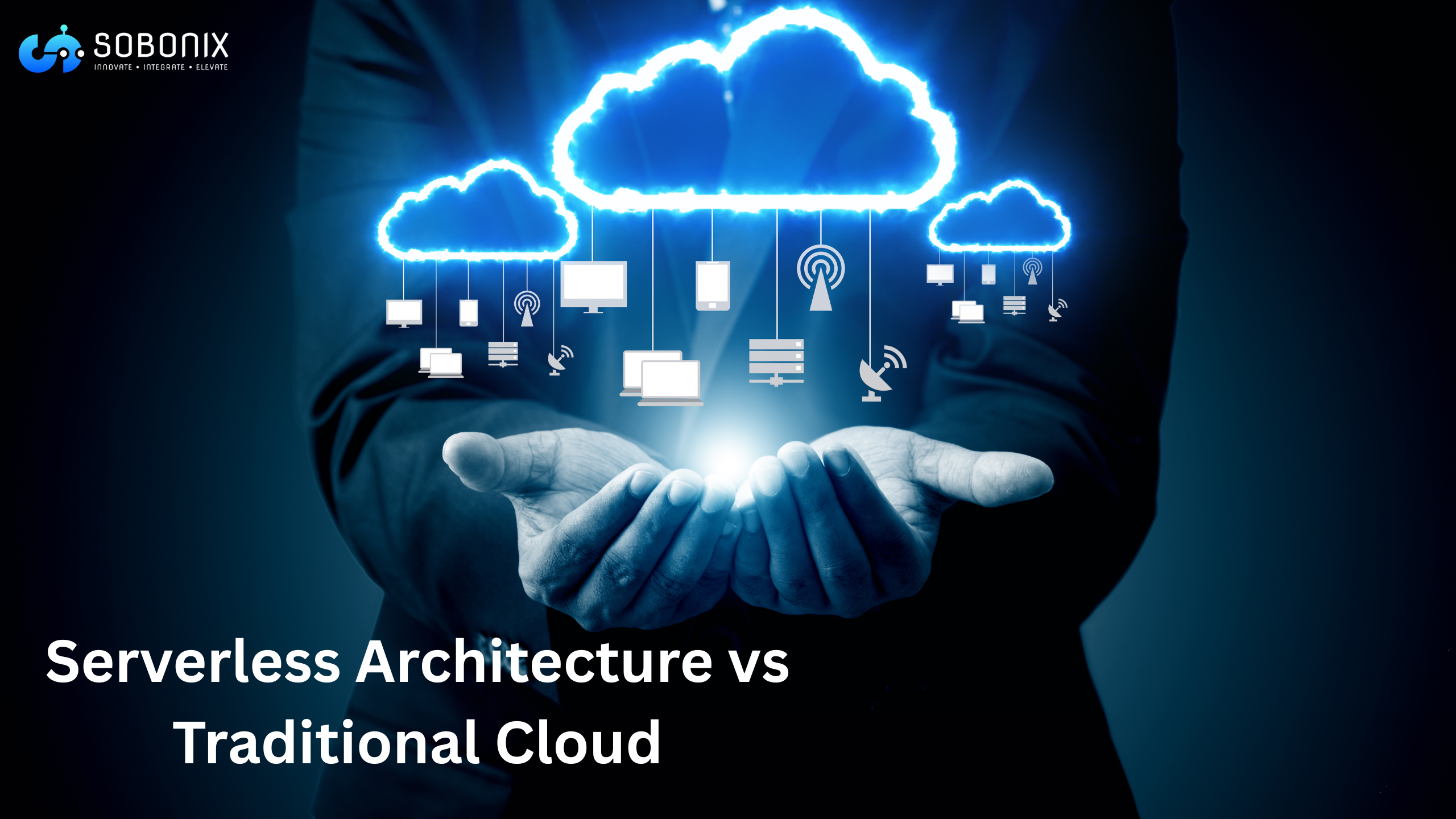Serverless Architecture vs Traditional Cloud: Which Is Better for Scalable SaaS?
Discover the key differences between Serverless and Traditional Cloud models to find which delivers better scalability, cost-efficiency, and performance for your SaaS applications.

In today's fast-paced digital ecosystem, SaaS has become the backbone of modern business operations. As companies scale up, scalability, flexibility, and performance are all top priorities-and that's where the debate between serverless cloud architecture and traditional cloud infrastructure heats up.
Whether you're a startup building your first product or an enterprise scaling globally, choosing the right architecture can define your SaaS platform's future.
Let's break down both approaches and see which one empowers scalable SaaS development.
Understanding Traditional Cloud Architecture
Traditional cloud computing has powered most SaaS platforms over the last decade. It consists of provisioning virtual servers, managing infrastructure, and scaling resources manually or semi-automatically.
Popular cloud providers, including AWS EC2, Google Cloud Compute Engine, and Microsoft Azure VMs, follow this model.

How It Works?
Businesses rent virtual machines and then allocate CPU, RAM, and storage.
DevOps teams maintain uptime, handle patching, scaling, and server management.
Applications operate around the clock, even at low-traffic hours.
Pros of Traditional Cloud Architecture
Full Control: The developer is allowed to fine-tune configurations and make customizations to environments.
Predictable Performance: Due to dedicated resources, high loads produce consistent performance.
Security & Compliance: Easier to implement organization-wide governance.
Cons
Cost Inefficiency: Paying for idle resources increases operation costs.
High Maintenance: Requires ongoing monitoring, scaling, and patch management.
Limited Agility: Slower deployment cycles for fast-changing SaaS products.
For many legacy enterprises, traditional cloud works well, but for next-generation SaaS startups, the Serverless Architecture is a smarter alternative.
What is Serverless Architecture?
Yet, contrary to the name, serverless doesn't mean no servers exist--it just means developers don't manage them.
Automatic infrastructure management in cloud service providers, such as AWS Lambda, Google Cloud Functions, and Azure Functions, lets developers focus exclusively on writing the code and deploying it.
How It Works
Developers write modular functions, which are executed on demand.
Cloud services provide automatic resource scaling and allocation based on incoming traffic.
You pay for only what you use, so you don't pay for idle servers.
Advantages of Serverless Architecture
Automatic Scalability: Functions scale instantly with user demand.
Cost Efficiency: Pay-as-you-go pricing eliminates resource wastage.
Faster Development: No need for infrastructure setup or maintenance.
Ideal for AI & ML Integration: Perfect for running lightweight AI and cloud-native software solutions.
Cons
Cold Starts: Initial requests may be slightly slower due to function boot-up time.
Vendor Lock-in: High dependence on the ecosystem of a particular cloud provider.
Complex Debugging: Distributed function logging complicates monitoring.
For companies working with a SaaS development company or an offshore SaaS development company, this model offers agility and scalability that is impossible to achieve with traditional infrastructure.
Serverless vs Traditional Cloud: Key Comparison
Why SaaS Companies Are Moving Toward Serverless?
The SaaS platforms need elastic scalability - to handle 1,000 users today and 100,000 tomorrow with no downtime.
That's where Serverless Architecture shines. It enables:
Faster go-to-market cycles for startups.
Cost optimization performed efficiently for growing companies.
Smarter user experiences with AI-driven automation.
A leading custom software development company in India, such as Sobonix, leverages both serverless and traditional cloud frameworks depending on client needs, making SaaS applications not just scalable but secure, intelligent, and cloud-native.
AI + Serverless: The Perfect Match for Modern SaaS
AI capabilities, from predictive analytics to personalization, thrive in serverless environments.
Why? Because serverless allows for real-time, event-based computation without pre-allocating infrastructure.
Some examples are:
Instant-scaling AI Chatbots during periods of intense user activity.
Data Processing Pipelines that only trigger functions when new data arrives.
Intelligent SaaS dashboards with on-demand analytics powered by machine learning models.
By partnering with an experienced AI and SaaS development company, businesses can combine AI and serverless infrastructure together to build faster, smarter, and more efficient platforms.

When to Choose Traditional Cloud Over Serverless
While serverless is revolutionary, the traditional cloud still has its place, particularly for:
Applications that have high traffic consistently.
Legacy systems that require full control of servers.
Workloads with complex compliance or data residency requirements.
The best approach? A hybrid model: traditional infrastructure for core systems, serverless functions for modular microservices.
Also Read : End-to-End Guide to SaaS & AI Software Development for Businesses in India
Conclusion:
Deciding which way to go with your SaaS The choice between Serverless Architecture and Traditional Cloud depends on your business model, budget, and scalability goals. The Serverless Architecture provides startups and scaling enterprises alike with Unmatched flexibility Reduced operational costs Seamless Integration with AI & Automation tools But it is important to partner with the right SaaS development company or offshore SaaS development company. From architecture selection to deployment and optimization, a trusted partner like Sobonix will help you future-proof your SaaS product as a leading custom software development company in India.
FAQs
Q1. Which one is cheaper for SaaS, Serverless or Traditional Cloud?
Generally, Serverless is more cost-effective because you pay only for execution time, not idle server hours. Traditional cloud models may be significantly more expensive if they are not optimized.
Q2. Can AI and machine learning applications run efficiently on serverless?
Yes. Serverless frameworks support AI and machine learning development solutions by enabling event-based triggers, APIs, and lightweight compute models-most suitable for real-time AI operations.
Q3. How can I migrate my traditional SaaS platform to a serverless model?
A SaaS and AI software development company can make migration easy. They assess your architecture, break it into microservices, and deploy it on serverless platforms like AWS Lambda or Azure Functions.
Q4: Is serverless architecture secure enough for enterprise SaaS?
Of course, leading providers implement encryption, role-based access, and compliance with ISO 27001, GDPR, and HIPAA to ensure enterprise-grade protection.